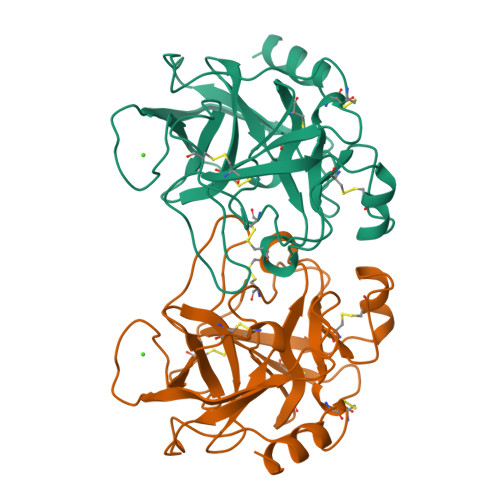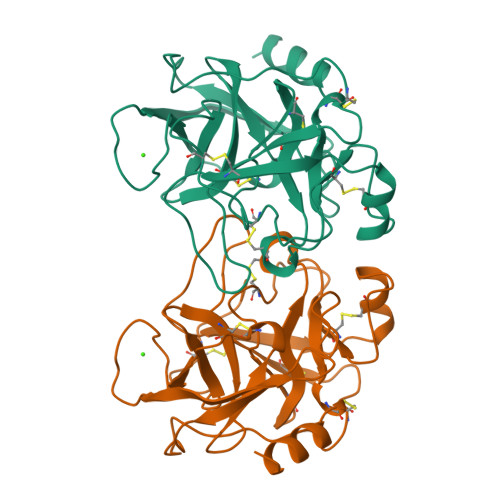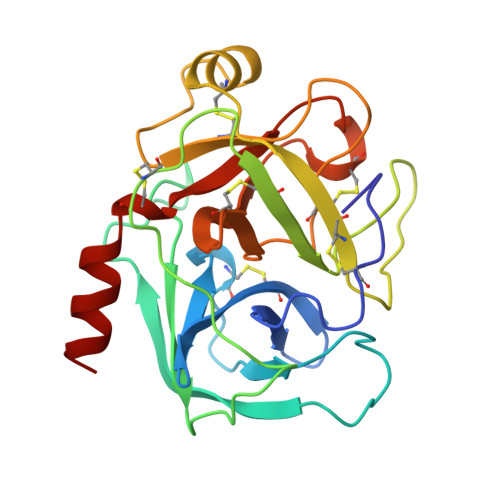The three-dimensional structure of Asp189Ser trypsin provides evidence for an inherent structural plasticity of the protease.
Szabo, E., Bocskei, Z., Naray-Szabo, G., Graf, L.(1999) Eur J Biochem 263: 20-26
- PubMed: 10429182
- DOI: https://doi.org/10.1046/j.1432-1327.1999.00452.x
- Primary Citation of Related Structures:
1AMH - PubMed Abstract:
Trypsin mutant Asp189Ser, first described by Gráf et al. [Gráf, L., Jancsó, A., Szilágyi, L., Hegyi, G., Pintér, K., Náray-Szabó, G., Hepp, J., Medzihradszky, K. & Rutter, W.J. (1988) Proc. Natl Acad. Sci. USA 85, 4961-4965] has played an important role in recent studies on the structural basis of substrate-specific catalysis by serine proteases. The present work reports the three-dimensional structure of this mutant crystallized in unliganded form: the first unliganded rat trypsin structure reported. The X-ray structure of the Asp189Ser trypsin mutant in complex with bovine pancreatic trypsin inhibitor is already known. The X-ray structure of free Asp189Ser rat trypsin revealed that the single amino acid mutation at the bottom of the substrate binding pocket of trypsin resulted in extensive structural changes around the mutated site and in dimerization of the mutant, in contrast with the complexed enzyme the structure of which is practically the same as that of wild-type trypsin. The structural rearrangement in the mutant was shown to be restricted to the activation domain region providing further evidence for the allosteric property of this structural-functional unit of the enzyme. This study supports our view that the plasticity of the activation domain may play an important role in the mechanism of substrate-specific serine protease action.
Organizational Affiliation:
Department of Biochemistry, Eötvös L. University, Budapest, Hungary.



















